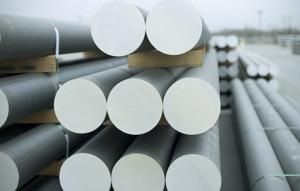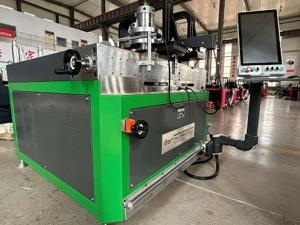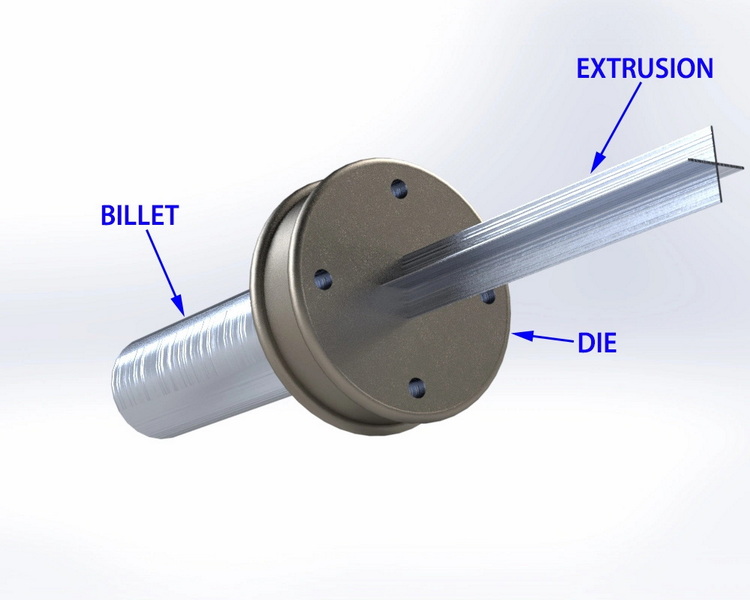Content Menu
● Understanding Aluminum Extrusion Billets
>> What is an Aluminum Extrusion Billet?
>> The Role of Billets in the Extrusion Process
● Key Factors Improving Production Efficiency
>> 1. Quality of Aluminum Billets
>> 2. Optimized Heating Processes
>> 3. Advanced Extrusion Equipment
>> 4. Die Design Optimization
>> 5. Post-Extrusion Processes
>> 6. Waste Reduction Strategies
>> 7. Supply Chain Optimization
>> 8. Training and Skill Development
● Benefits of Using Aluminum Extrusion Billets
● Conclusion
● FAQ
>> 1. What factors affect the quality of aluminum extrusion billets?
>> 2. How does preheating affect the extrusion process?
>> 3. What are common applications for extruded aluminum products?
>> 4. How does die design impact production efficiency?
>> 5. What advancements are being made in aluminum extrusion technology?
Aluminum extrusion is a critical manufacturing process that transforms aluminum billets into various shapes and profiles used across numerous industries. The efficiency of this process significantly impacts production costs, quality, and delivery times. This article explores how aluminum extrusion billets enhance production efficiency, focusing on their role in optimizing the extrusion process, improving product quality, and reducing waste.

Understanding Aluminum Extrusion Billets
What is an Aluminum Extrusion Billet?
An aluminum extrusion billet is a solid cylindrical block of aluminum alloy that serves as the raw material for the extrusion process. These billets are typically produced through casting or direct chill casting methods, where molten aluminum is poured into molds or extruded into specific shapes before being cooled and solidified.
The Role of Billets in the Extrusion Process
The extrusion process involves heating the aluminum billet to a malleable state and then forcing it through a die to create desired shapes. The quality and characteristics of the billet directly influence the efficiency and outcome of this process. High-quality billets ensure better flow characteristics, reduce die wear, and improve the overall quality of the extruded products.
Key Factors Improving Production Efficiency
1. Quality of Aluminum Billets
High-quality aluminum billets are essential for efficient production. They are produced through precise control of alloy composition, which affects their mechanical properties. The use of advanced techniques like homogenization ensures uniformity in microstructure, leading to improved extrudability.
- Reduced Defects: Quality billets minimize defects such as cracks or surface imperfections during extrusion.
- Enhanced Flow Properties: Properly manufactured billets allow for smoother flow through the die, reducing energy consumption and increasing output.
2. Optimized Heating Processes
Heating the aluminum billets to the right temperature is crucial for achieving optimal malleability without reaching a molten state. The preheating process typically occurs in specialized furnaces designed to maintain precise temperature control.
- Uniform Heating: Ensures that all parts of the billet reach the desired temperature simultaneously, preventing inconsistencies.
- Energy Efficiency: Advanced heating systems reduce energy consumption, contributing to lower operational costs.
3. Advanced Extrusion Equipment
Modern extrusion presses equipped with advanced technology significantly enhance production efficiency. These include:
- High-Pressure Hydraulic Systems: Capable of exerting up to 15,000 tons of pressure, ensuring effective material flow.
- Automated Control Systems: Allow for real-time monitoring and adjustment of parameters such as temperature and pressure, ensuring consistent quality.
The integration of robotics in handling and transporting billets also streamlines operations, reducing manual labor and increasing safety in manufacturing environments.
4. Die Design Optimization
The design of the extrusion die plays a pivotal role in production efficiency. Advanced die designs can reduce material waste and improve product accuracy.
- Complex Shapes: Modern dies can create intricate shapes with tight tolerances, expanding product capabilities.
- Reduced Maintenance: Improved die materials and designs lead to less wear and tear, decreasing maintenance costs.
5. Post-Extrusion Processes
After extrusion, additional processes such as quenching and aging further enhance product properties. Quenching involves rapidly cooling the extruded material to lock in desired mechanical properties.
- Improved Strength: Aging processes can increase hardness and strength, making products more durable.
- Surface Finishing: Techniques such as anodizing enhance corrosion resistance and aesthetic appeal.
6. Waste Reduction Strategies
One of the most significant advantages of using high-quality aluminum extrusion billets is their contribution to waste reduction during production. By ensuring that each billet is manufactured to exact specifications:
- Minimized Scrap Rates: High-quality billets reduce scrap rates during cutting and shaping processes.
- Recycling Opportunities: Any excess material generated can often be recycled back into the production cycle, further enhancing sustainability efforts.

7. Supply Chain Optimization
Efficient supply chain management plays a crucial role in maximizing production efficiency. By sourcing high-quality aluminum billets from reliable suppliers:
- Consistent Quality: Ensures that manufacturers receive uniform materials that meet specific standards.
- Reduced Lead Times: Streamlined logistics can decrease lead times for raw materials, allowing for quicker response to market demands.
8. Training and Skill Development
Investing in workforce training is another critical factor that can enhance production efficiency. Skilled operators who understand the nuances of working with aluminum extrusion billets can:
- Optimize Machine Settings: Make real-time adjustments based on their observations during production.
- Troubleshoot Issues Quickly: Identify potential problems early on, minimizing downtime and maintaining productivity levels.
Benefits of Using Aluminum Extrusion Billets
The use of high-quality aluminum extrusion billets leads to numerous benefits:
- Increased Production Speed: Efficient heating and optimized processes allow for faster turnaround times.
- Cost Reduction: Reduced material waste and lower energy consumption lead to significant cost savings.
- Enhanced Product Quality: Improved mechanical properties result in higher-quality end products that meet industry standards.
- Sustainability Benefits: Using recycled materials in producing new billets contributes positively to environmental sustainability efforts.
Conclusion
In conclusion, aluminum extrusion billets are fundamental to improving production efficiency in the aluminum extrusion process. By focusing on billet quality, optimizing heating methods, utilizing advanced equipment, refining die designs, implementing effective post-extrusion processes, reducing waste, optimizing supply chains, and investing in workforce training, manufacturers can achieve significant enhancements in productivity and product quality. As industries continue to demand lightweight yet durable materials, the role of aluminum extrusion billets will only grow more critical in meeting these needs.

FAQ
1. What factors affect the quality of aluminum extrusion billets?
The quality is influenced by alloy composition, manufacturing processes (like casting), and heat treatment methods used during production.
2. How does preheating affect the extrusion process?
Preheating improves malleability, allowing for smoother flow through dies while preventing defects such as cracking during shaping.
3. What are common applications for extruded aluminum products?
Extruded aluminum is widely used in construction (window frames), automotive parts (lightweight components), aerospace applications (aircraft structures), electrical components (heat sinks), and consumer goods (furniture).
4. How does die design impact production efficiency?
Well-designed dies reduce material waste, improve flow characteristics, allow for tighter tolerances in finished products, and minimize maintenance needs over time.
5. What advancements are being made in aluminum extrusion technology?
Innovations include automated systems for better control during extrusion, improved die materials for longer life spans, advanced thermal management techniques for energy savings, and smart technologies for predictive maintenance.






















